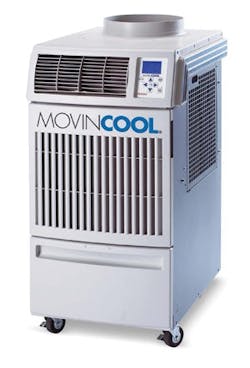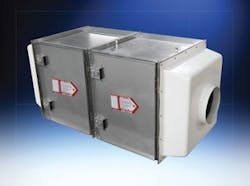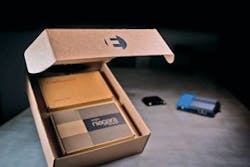Refrigeration systems from Emerson/Vilter are ideal for pharmaceutical manufacturing applications and provide environmentally friendly, energy-efficient refrigerant solutions. Refrigeration packages use a low refrigerant charge (about 1 lb/Ton of refrigeration) that improves safety and reduces certification.
Pharmaceutical cleanrooms require strict environmental controls to ensure the manufacture of quality products. Controls regulate a wide range of conditions such as airborne particulates, microorganisms, temperature, humidity, refrigeration, airflow, air velocity and more. Of course, the end goal is to maintain a safe, clean, sterile environment and eliminate any possibility of contamination, while meeting pharma-specific regulations.To assist in implementation, companies may want to start with an Environmental Control Program (ECP), which includes a written plan that outlines the steps in developing, establishing, implementing and monitoring the environmental controls necessary to ensure that products are consistent, reproducible and reliable. An ECP includes many elements such as facility design, construction, operation, utilities, cleaning, raw materials, components, personnel, waste flow, preservative systems and environmental monitoring.
According to Rockwell Automation, “The environment in which your product is manufactured directly impacts product quality. When you monitor and control the critical environment conditions, you help to ensure quality and compliance.”
Rockwell offers a validated building management system for pharma production that integrates process control and environmental management for enhanced productivity and improved product quality. Their products provide real-time access and extended enterprise visibility to vital manufacturing data, which can then be used to implement business process improvements and increase access to real-time production information.
“The push for data integrity is impacting how pharmaceutical manufacturers deploy building management systems in their facilities,” says Paul English, engineering team lead, Rockwell Automation. “By integrating a building’s system with an industrial automation solution, environmental quality data can be managed at the controller, the data server and in a historian. This integration helps maintain critical process data during network or other disruptions and meets FDA requirements that data be used for process energy traceability and with process quality assurance data.”
LESS HUMAN INTERVENTION
MovinCool’s Climate Pro 12 portable heat pump is said to be a complete temperature control solution, providing the largest cooling (10,200 Btu/h) and heating (9,900 Btu/h) capacity possible in its class at 115V, 15 amps power. It is self-contained and features a programmable digital controller for automatic operation.
Along with environmental controls, companies try to minimize human intervention in sterile areas to help reduce contamination, and they are finding more sophisticated ways of doing that.“In an effort to reduce the risk of microbial contamination in Grade A areas, we are seeing a strong move toward operations that minimize human intervention,” says John Cobb, company microbiologist from PMT (GB). “Human intervention during production, or during air monitoring when operators may perform multiple agar plate changes for example, is thought to be the single biggest contamination risk when low numbers of microbials are anticipated. One solution is the adoption of detection equipment and methods which can monitor for the presence of microbial contamination over longer periods of time,” he says.
HEMCO’S CleanAire HEPA and Carbon Filter Paks are designed to be mounted inline in the exhaust ducting from a fume hood or contaminant source up to 1500 cfm. The filter pak includes a galvanized steel housing with hinged and gasketed access door for filter change-out and molded composite resin inlet and outlet plenums with duct connection collars sized to meet specification.
“This is now possible in light of recently introduced equipment capable of not just interval sampling, but microbial monitoring that has been independently validated for up to 4 hours active air sampling on a single 14cm plate of TSA,” Cobb says. “We are also seeing a greater use of barrier technologies being used in manufacturing, like RABS and isolators. Modular designs of air sampling equipment to minimize footprint in these critical areas can sometimes be necessary, as space is usually at a premium. With very low levels of microbial particles to measure in these systems, users are also beginning to think more about resolution and accuracy.”Consequently, sampling volumes of >1m3 are being demanded (in accordance with USP Chapter 1116 guidance) and the relatively unknown d50 specification is becoming an important criteria for many users, Cobb adds. “ImpactAir, a Public Health England validated slit-to-agar active air sampler manufactured by Pinpoint Scientific, is at the leading edge in terms of addressing these trends toward best practice and understanding more about the microbial status of controlled clean areas.”
ENERGY CONSIDERATIONS
OptimumEDGE is a quick-start HVAC optimization solution that cuts chiller-plant energy use by 15-20 percent on average without affecting building operations or strict environmental requirements. It is engineered for facilities with up to three chillers and a combined cooling capacity of 400 to 3,000 tons.
Pharmaceutical companies, even smaller ones, are under a lot of pressure to achieve goals for operational energy savings and carbon reductions, says Eric Toback, P.E., LEED AP, director of project development for Optimum Energy. “Everyone wants them — the quandary now is how to achieve them. The low-hanging fruit, like lighting retrofits, space temperature resets and occupancy schedules, has largely been picked.”Optimum Energy offers options to get significant energy savings quickly by optimizing chilled water plants, air handling units and boiler plants. The software adjusts components dynamically, based on hundreds of inputs, so the plant as a whole runs as efficiently as possible without compromising sensitive environments.
“Reliability and stability of operations always trump potential energy savings. But now there’s a genuine desire to go deeper with energy systems. Pharma companies are realizing that yes, there is some risk involved, but the benefits are worth it. The key to long-term success is verifiable proof of savings and corporate stakeholder commitment,” he says. “That’s how things are going to scale across facilities. One challenge for many: Corporate teams set the goals and targets, but to succeed, they are reliant on individual site teams to take the baton and run with it.”










